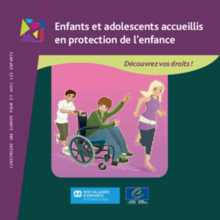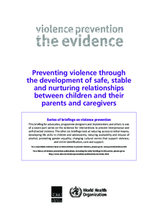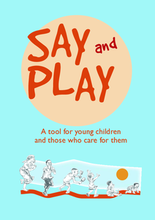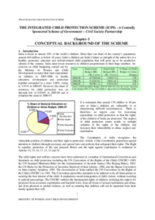Demographic Data
|
Sources: World Bank, UNDP, UNAIDS, DHS 2013 |
Displaying 13361 - 13370 of 14389
« Enfants et adolescents accueillis en protection de l'enfance - Découvrez vos droits! » est un livret d’information qui s’adresse aux enfants et aux jeunes pris en charge de manière alternative. Il contient des bandes dessinées, des petites histoires et des textes informatifs permettant aux enfants et aux jeunes de découvrir leurs droits et d’apprendre à jouer un rôle actif dans leur propre prise en charge.
Ce rapport est basé sur une évaluation indépendante du SSI réalisée en 2009. Son principal objectif est d'identifier et débattre des problèmes liés au processus d'adoption en vue d'aider le Vietnam à préparer sa ratification de la CLH-1993.
Guide de Programmation pour les enfants sans prise en charge parental.
L'objectif de ce manuel est de présenter un ensemble d'indicateurs globaux communs pour la prise en charge formelle des enfants, notamment des enfants vivant en institution ou en famille d'accueil suite à un arrangement formel (
This document includes a portion of the individual worksheets accompanying the Manual for the Measurement of Indicators for Children in Formal Care.
This report brings together an eight-part series of briefings on the evidence for interventions to prevent interpersonal and self-directed violence. By spotlighting evidence for the effectiveness of interventions, the series provides clear directions for how violence prevention funders, policy makers and programme implementers can boost the impact of their violence prevention efforts.
This briefing looks at the effectiveness of interventions that encourage safe, stable and nurturing relationships for preventing child maltreatment and aggressive behaviour in childhood. The focus is on primary prevention programmes, those that are implemented early enough to avoid the development of violent behaviour such as child maltreatment and childhood aggression.
This document is the seventh, and final, chapter of Doing Better for Children: The Way Forward, produced by the Organisation for Economic Co-operation and Development. The aim of this chapter is to contribute to the policy debate on child well-being, synthesising the previous chapters and drawing on the existing research and policy literature.
Say and Play is an interactive tool designed for orphans and vulnerable children from three to six years old and those who care for them. It uses pictures, stories and games to help children talk about their lives and, through these activities, it guides adults to identify and support the emotional and social needs of children.
In 2006 the Indian Ministry of Women and Child Development proposed the adoption of an Integrated Child Protection Scheme (ICPS), which was adopted and launched by the central government in 2009-2010. Recognizing chronic under funding of child protection services in the country and major gaps in the system, the ICPS was expected to significantly contribute to the realization of Government/State responsibility by creating a system that would effectively and efficiently protect children.









